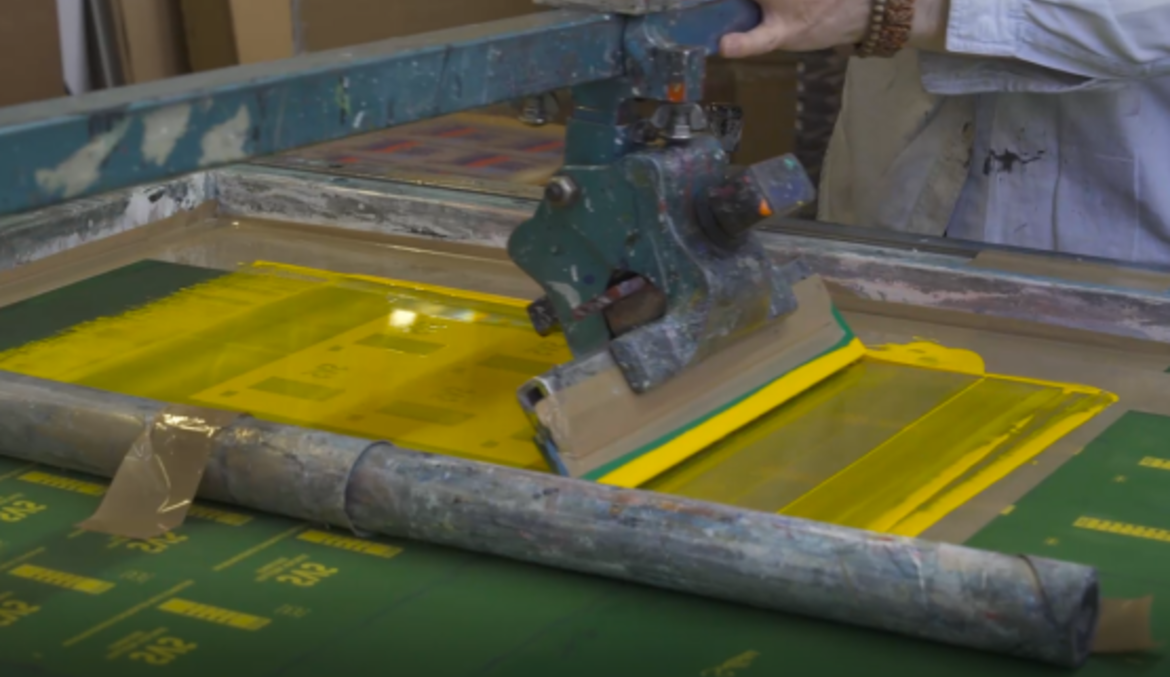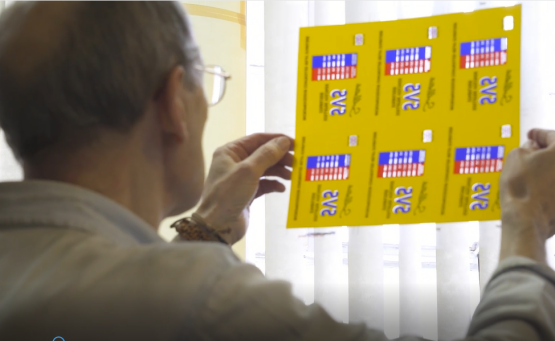If you were to watch the screen printing process, you would be forgiven for thinking it looked a little archaic.

Now that most things are controlled by computers and autonomous processes, watching an actual human being manually squeegeeing ink across the screen one at a time can seem a little strange. Yet this is how screen prinitng works and moreover how it's always worked.
Considering the average domestic printer can produce 30 pages per minute, is it really the best approach?
Well there’s good reason why screen printing is still relevant and widely used.
PUT SIMPLY – IT JUST WORKS.
Where other printing methods can process much higher volumes and far more complex designs; the tactile nature of the final result, bold and punchy graphics and the range of printed surfaces make this screen printing very desirable.
It may look a bit old-school but the results really do speak for themselves. An analogy could be what CDs are to vinyl.
CDs were revolutionary. Production costs for record companies were significantly reduced and artists could shift massive numbers to the world. The quality is exactly as intended and everyone was happy.
However, vinyl sales have shot through the roof and are only dwarfed by streaming and download services like Spotify and iTunes.
Just like screen printing, vinyl just works. It has a special feeling about it. It’s simple, analogue and raw. It also knows it place – the same of which can be said about screen printing.
TAKE TIME TO EVALUATE
Before jumping feet first into a huge printing job, step back and evaluate what you’re trying to achieve. Look at your artwork. Look at where you want to display it. Think about the numbers you’re looking to produce.
Think about the finish. Thinking digital printing is amazing but it struggles with metallic. Screen printing does this superbly so if you’re looking for a shiny control interface cover then that’s the way to go.
Think about how your audience will respond to your print. Are they going to hold it? Will it be displayed on the wall?
Echoing back to our vinyl example, specific artists produce their albums on vinyl because they know their audience. They know their listening habits and appreciation for owning something tangible and beautiful.

All printing methods have a purpose. If they didn’t, there wouldn’t be so many – there would be one type of printing that does everything.
Materials are so important when producing printed collateral. They feel different, they trigger a different emotional response in your audience and they have display content differently.
A large aluminium print bolted to the wall in the lobby of your offices has a much more permanent feeling than blue tacked lightweight paper. It’s this investment and permanence that can add a high level of legitimacy to your business and trigger all kinds of thoughts and emotions from the one viewing it – often subconsciously.
How would you feel if you were visiting a potential supplier’s premises and were greeted with large format acrylic case studies lining the walls and very permanent looking signage at every turn? You’ll probably think they mean business.
UNDERSTAND YOUR AUDIENCE
As with most things in business, it’s all about understanding your audience. When you truly understand your audience and what you’re trying to achieve, your plan will have far more context.
So before writing off screen printing as that slow and archaic printing process that isn’t controlled by shiny machines, really sit down and think about what you would like to achieve with your printing.



